Ford vs Chevrolet, Nike vs Adidas, or Mac vs Windows are just a few of the iconic competitors that can be found in our society. When it comes to the firearm industry, there are probably no cartridge duos that are more rivaled than the .30-06 vs .308.
With any product, there are pros, cons, and loyalty to take into consideration when comparing icons in any industry. As consumers, we are always trying to determine which is the very best product to buy because success, performance, style, etc. are extremely important factors. We’ll take a closer look at the history of how these legendary cartridges got their start and the differences between .308 and .30-06 rounds.
To start, the .308 Winchester and the .30-06 Springfield are perhaps the two most storied rounds in the history of firearms. Filled with historical importance, both cartridges have left their mark in history and continue to be extremely popular today. Looking at each round independently is where this comparison battle will begin.
The Difference Between .308 and .30-06 Rounds
-
.308 Winchester
Winchester developed the .308 round in 1952 as a commercial hunting round and is pronounced “three-oh-eight.” The rifle round is rimless and bottlenecked. Two years after its introduction, in 1954, NATO adopted the design and derived the 7.62×51 mm round as the standard small arms ammunition for treaty countries.
While 7.62×51 bullets do have minor design differences to adhere to military standards, the Sporting Arms and Ammunition Manufacturers Institute (SAAMI) considers .308 and 7.62×51 rounds to be interchangeable within firearms.
Military — The 7.62×51 mm was primarily used in the M14 rifle and the M60 machine gun by the US military until the M16 rifle and .223 rounds were introduced. However, the 7.62×51 mm still remains in service by the US in various sniper rifles, machine guns, and special operation weapons because of its extremely high performance.
Hunting — In the civilian market, the .308 Winchester round is extensively used by hunters pursuing medium to large game targets. Some of the most common species hunted with the .308 cartridge are whitetail deer, pronghorn, caribou, black bear, moose, elk, African duiker, and antelope. Because of its design, the .308 has become the most popular short-action cartridge in the world.
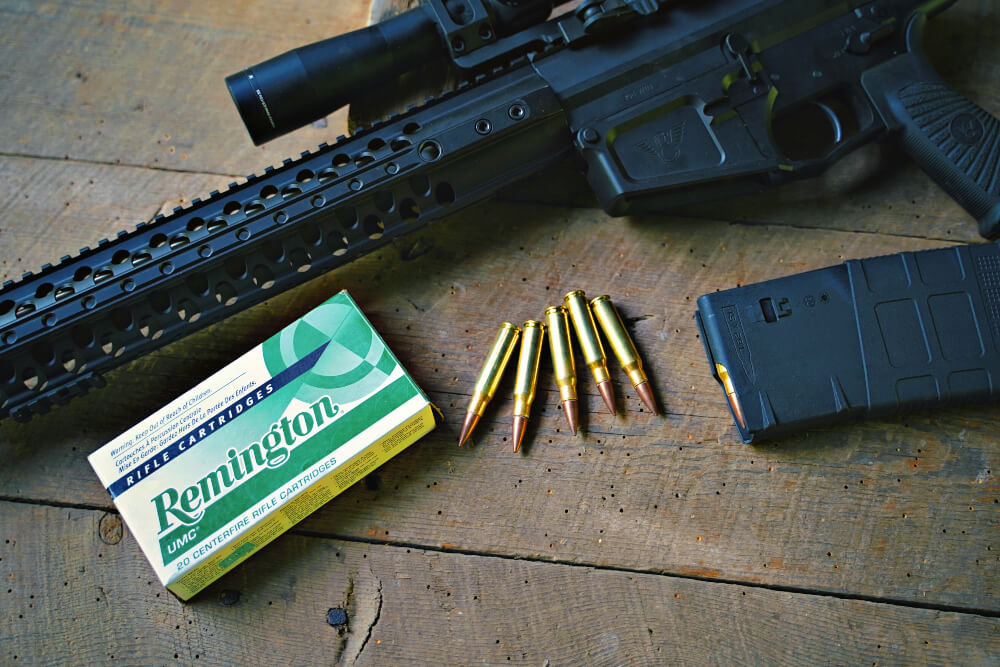
-
.30-06 Springfield
Predating the .308 Winchester, the “thirty-aught-six” round was introduced to the US Army in 1906 and remained in service until the 1970s. The “30” refers to the caliber and “06” is the year the military adopted it. For nearly fifty years, the .30-06 was the primary rifle and machine-gun cartridge until the 7.62×51 mm (.308 Winchester) round replaced it.
Military — The primary reason the .30-06 round was developed was to increase the accuracy and performance of machine guns at longer distances. During its patriotic military service, the .30-06 cartridge was used in the bolt-action M1903 Springfield and M1917 Enfield rifles, the semi-auto M1 Garand M1941 Johnson, the Famage Mauser, the Browning Automatic Rifle (BAR), and various machine guns.
The famous round served in both World Wars, the Korean and Vietnam wars.
Hunting — Even though the military has retired the use of the .30-06 cartridge, it still remains an extremely popular choice due to providing the upper limit of tolerable power to most shooters.
Recreational shooters and hunters are always conscious of the recoil impacting their shooting, and the .30-06 cartridge provides the most power while managing the recoil to prevent any trigger flinches. The cartridge first gained hunting notoriety when Teddy Roosevelt took a civilian version of the .30-06 on his African Safari in 1906 and Ernest Hemingway in 1933, where lions and rhinos were taken down with ease.
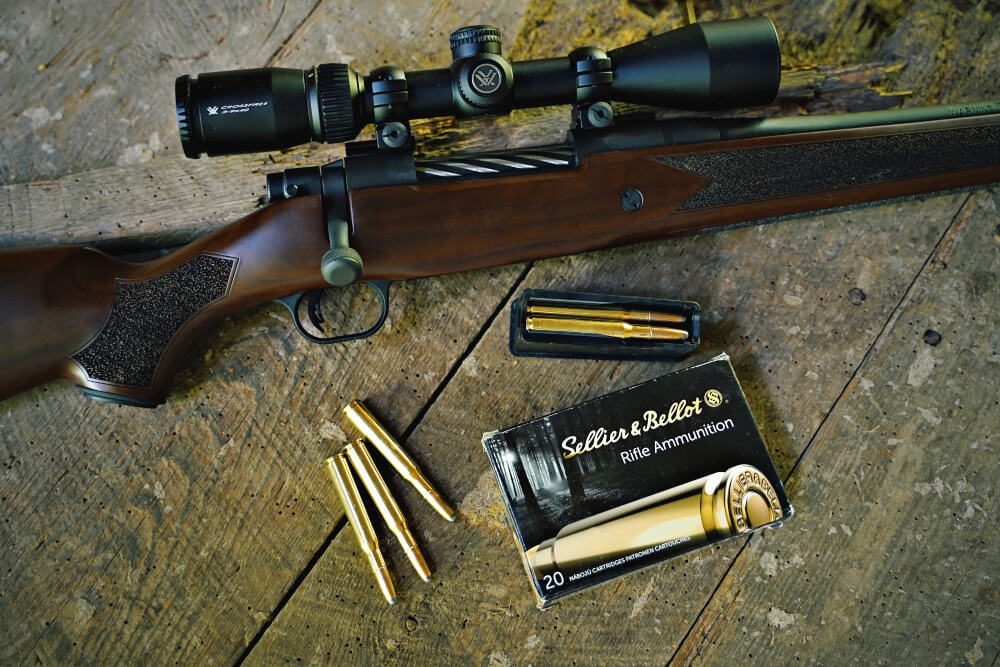
Which round is better?
Before trying to crown the champion, let’s look at a few of the most striking similarities that the rounds have. The first and most important, they both use .308-inch diameter bullets. This makes the comparison a little easier than with differing bullet sizes.
The typical weights that are commonly used are between 140-180 grains. Both the .30-06 and .308 are highly respected for their performance in accuracy, range, power, and moderate recoil. Both rounds were used extensively by military snipers well after their respective service rifles were retired from service. With so many similarities, it may seem to be a difficult task to compare the two cartridges that were developed over 50 and 100 years ago.
Size — The first major difference of the .308 vs .30-06 is going to be the size of the bullet. The case length of the .30-06 is almost a half-inch longer than the .308 Winchester. Back in 1906, the technology in propellants was not as efficient as in the 1950s, which is why the .30-06 was designed with a larger casing to house more propellant.
When the military sought to replace the .30-06 cartridge, a smaller case was achievable because the advancements in propellant allowed for high bullet velocities with smaller amounts of gunpowder. With shorter cases, the bolts and actions could be shorter, which, in theory, could reduce production costs and overall weight of the gun.
Today, firearm manufacturers produce guns in several calibers but only two different action sizes. Short action vs long action depends on the size of the cartridge and the .308 Winchester is a short action round, while the longer case of the .30-06 needs a long action firearm.
Accuracy — back when the .308 Winchester first entered the civilian market, the differences in accuracy were clear as day when compared to the old .30-06 cartridge. To sum it up, marksmanship competitions had to shrink the sizes of their bullseyes to accommodate for the increased accuracy.
However, if you fast forward 60+ years, the difference in accuracy is far less noticeable. The developments in cartridge technology and gunpowder have significantly closed the gap between the .30-06 and .308. When looking at similar bullets fired from similar rifles, the .30-06 cartridge will have the upper hand in velocity.
The .308 will have less recoil and the bullet drop will be as close to equal for comparison sake. In terms of accuracy from 600-800 yards, the bullets can be interchanged.
30-06 Springfield Pros and Cons
Pros
- Use heavier bullets
- Higher velocities
- More reloading options due to a larger case
Cons
- Needs long action rifle
- Fewer rifle choices
- Less accurate at 1,000+ yards
- Ammunition is more expensive
.308 Winchester Pros and Cons
Pros
- Used in short action rifles
- More rifle choices
- Increased accuracy over 1,000+ yards
- Less expensive ammo
- Cheaper to reload
Cons
- Lighter bullets
- Lower powder capacity = lower velocities
With all things considered, choosing which cartridge is the “better” one ultimately depends on what your intended use is. If you’re new to shooting or hunting, it may be better to go with the .308 because ammunition is cheaper, there is a larger selection of rifles to choose from, and it’ll be easier to shoot. Just like with cars, everyone has their preference with ammunition, even when performance metrics are about the same across the board.
To check out the best selection of .308 and 30-06 rifle rounds, AmmoForSale.com should be your first stop. We carry a full selection of the top manufacturers from around the world!


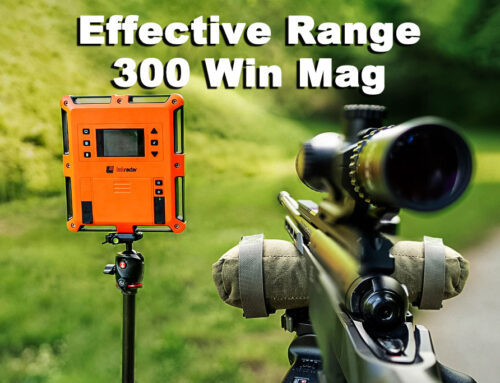
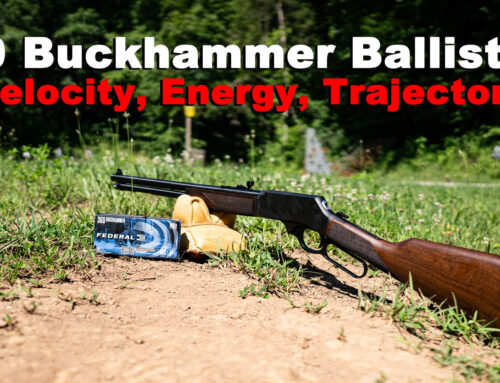
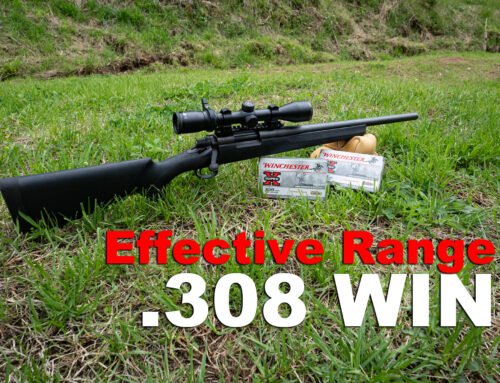
Leave A Comment